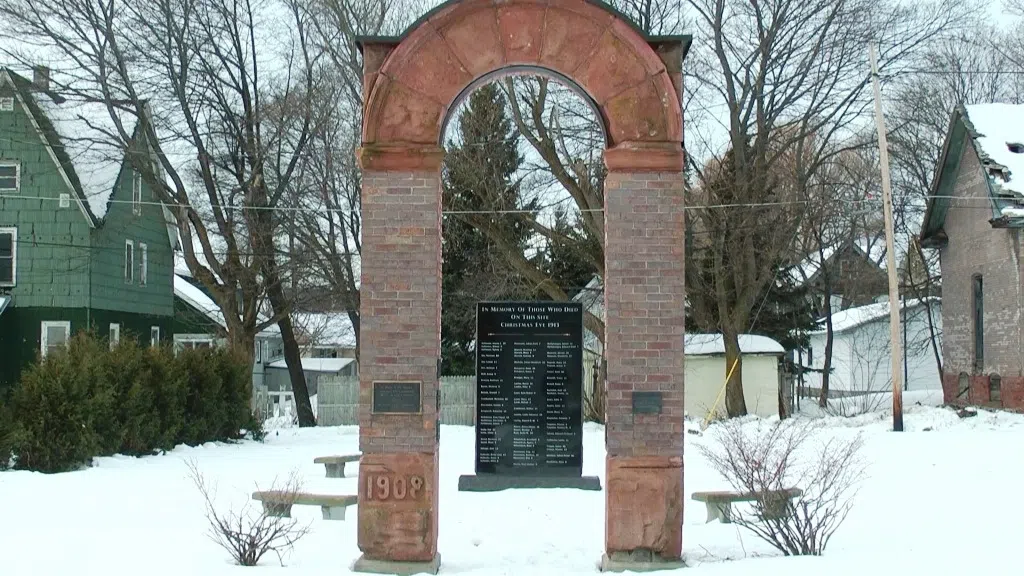Intentionally keeping cultures, traditions, and heritage keeps the Croatian community close knit. While in the past Slovenia, Serbia, and Croatia kept a complicated relationship, the communities have come together too.
While under the oppression of the Austro-Hungarian empire many Slovenians, Serbs, and Croatians immigrated to the United States during the mid to late 1800s.
Like other rural Europeans immigrants, they sought prosperous futures in America. But immigrants from the Balkans saw their journey as more political than others, while fleeing a region at the center of generations of conflict.
you know, the education. They were, you know, farmers and, you know, I guess a lot when they came over and they didn’t know the English language. So when they would come to work at places like Calumet, they would get the kind of the lowest level jobs in the mines and even, you know, above ground too. – Penny Menze, Event Coordinator, CroFest
Penny Menze says her grandmother worked as chambermaid in a hotel when she arrived to the Keweenaw Peninsula. Her grandfather worked below ground as a trammer in the mines. Anne Linja adds workers pooled their money together to create cheaper living conditions and send funds back home to the family. As families built modest wealth, one uncle would sponsor a nephew to come to Calumet, and so on.
So it was kind of a network of community and family. So it depended on where the work was, but it also depended on where your family and your hometown people were. – Anne Linja, President, Calumet Chapter of the Croatian Fraternal Union
Calumet was one of the Balkans first major settlements into the United States. Miners in the Croatian community were even the longest hold outs during the Copper Strike that lasted from July 1913 to April 1914. Among the community’s most famous members includes Labor leader Anna Klobacher Clemenc.
The men had their roles in the strike, but the women almost did more because they had to support their husbands that were no longer working. They had to maintain the culture, raise the kids. And so Annie was kind of like the leader of the women’s role in the strike. – Anne Linja, President, Calumet Chapter of the Croatian Fraternal Union
During the strike, miners across ethnic groups suffered several tragedies. For the Croatian community the most famous tragedy was the Seeberville Muders of Steven Putrich and Alois Tijan. Both were incidentally killed when deputies for the mining company attempted to arrest two immigrant workers for using a company trail on their walk home. After the strike was broken, Michigan Tech Archivist Lindsay Hiltunen notes many moved to Chicago to work in the coal fields.
Family, religion and a strong connection with neighbors allowed the Croatian community to flourish in cities such as Pittsburgh and Chicago. For many the food, music and dancing allow the community to keep connecting. While it’s harder to do further away from Croatian community centers families found ways to pass traditions down, even without telling their children.
There’s a lot of promises in America, that was the land of golden honey. So it really intrigued me, you know, our grandparents, what they did for us when they came over. But also what they left behind. I started learning how you know important the church was for the culture and I know my grandmother always had a rosary with her and an in calumet especially every ethnic group had their own church. And then of course the food. I’ve got the Calumet cookbook and started noticing all the Croatian names in there and then all the dishes that my mother made in Arizona, but I didn’t realize they were Croatian. – Penny Menze, Event Coordinator, CroFest
They went for jobs. A lot of them went to Chicago and Pittsburgh, but I think it was just the lack of work. And then when they had their specialties, if there were mines in Pennsylvania or in Colorado, that’s where they would go. – Anne Linja, President, Calumet Chapter of the Croatian Fraternal Union
Two years ago, the community returned to the root of many immigrant stories, with the first iteration of a Croatian Festival in Calumet, when Croatian Elvis visited for dinner. Since then, Penny Menze and Anne Linja have worked together with Croatian Fraternal Unions to plan an even bigger event this month at the Calumet Theatre.
Linja says intentional efforts keep communities together, have allowed people to connect with their past, and brought unique additions to the cities and towns Croatians, Slovenian, and Serbian descendants live.
Otherwise, it just goes away because I would say at the turn of the century, one third of the 30,000 people that were up here were either Croatian or Slovenian. And now it’s so much less. And so it’s only a small group of people who are intentionally propagating the culture. – Anne Linja, President, Calumet Chapter of the Croatian Fraternal Union
On August 15th CroFest will invite the Tambaritzans, and Croatian Elvis to the Calumet Theatre. The festival will enjoy Croatian dishes, music, dancing, programs and activities. The unique culture and community built a close knit network of families and friends over many generations, and happily invites the entire Copper Country to celebrate a significant part of the Keweenaw Peninsula’s people and history.










